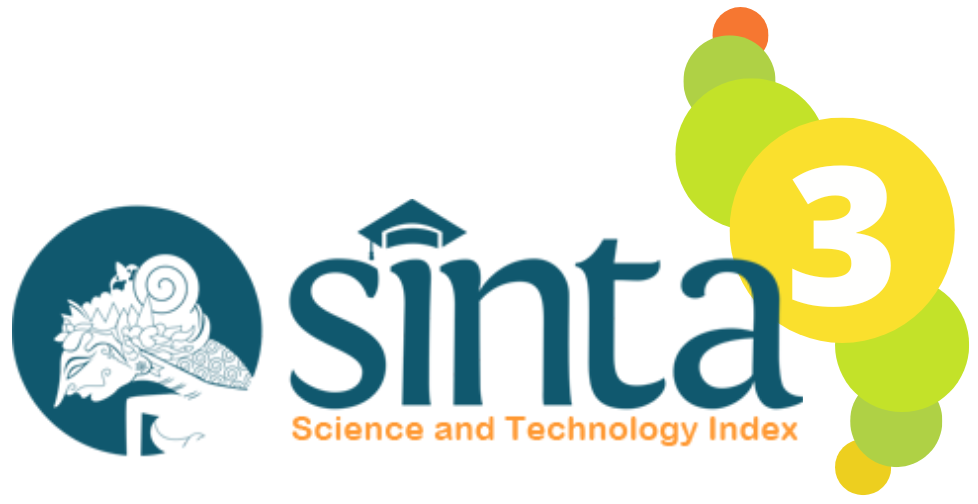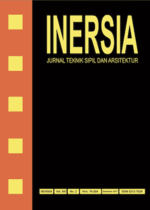Analisis Kuat Tekan Mortar Geopolimer Berbahan Silica Fume dan Kapur Tohor
DOI:
https://doi.org/10.21831/inersia.v17i1.35901Keywords:
Silica Fume, Kapur Tohor, Mortar GeopolimerAbstract
ABSTRACT
Cement Portland is an essential ingredient in infrastructure development, but in portland cement production, there is a release of carbon dioxide (CO2). Innovation in materials in the construction of mortars, namely geopolymer mortars, is expected to reduce cement and air pollution. The research using experimental methods, aimed at locating the effect of the use of silica fume and quick lime with variations of silica fume: quick lime 90:10, 80:20, 70:30, 60:40, 50:50, using a cube mold of 5 x 5 x 5 cm as much as 120 items, for testing age 7, 14, 28 days. Research has a compressive strength with an optimum geopolymer mortar on a variation of silica fume: quick lime 70:30, which is 3.52 MPa at the age of 28. Based upon compressive strength results, apply the age of mortar 7, 14, 28 days known the longer a strong mortar age agency. Silica fume and quick lime may be used as alternative materials to replace cement. Based on ASTM C 270 to imply mortars type K and type O.
ABSTRAK
Semen portland merupakan bahan material penting dalam pembangunan khususnya di bidang teknik sipil, namun dalam proses produksi semen portland terjadi pelepasan karbon dioksida (CO2). Perlu adanya inovasi bahan dalam pembuatan mortar yaitu mortar geopolimer yang diharapkan dapat mengurangi penggunaan semen dan polusi udara. Penelitian ini menggunakan metode eksperimental, bertujuan mengetahui pengaruh penggunaan silica fume dan kapur tohor terhadap mortar geopolimer dengan variasi silica fume:kapur tohor 90:10, 80:20, 70:30, 60:40, 50:50, benda uji berbentuk kubus berukuran 5 x 5 x 5 cm sebanyak 120 benda uji, pengujian umur 7, 14, 28 hari. Hasil penelitian didapat kuat tekan optimum mortar geopolimer pada variasi silica fume:kapur tohor 70:30 yaitu 3,52 MPa pada umur 28 hari. Berdasarkan hasil kuat tekan pengaruh umur mortar 7, 14, 28 hari diketahui semakin lama umur mortar kuat tekan semakin meningkat. Silica fume dan kapur tohor dapat digunakan sebagai bahan alternatif pengganti semen. Berdasarkan ASTM C 270 termasuk dalam mortar tipe K dan tipe O.
References
F. M. Fajri and R. J. Sumabrata, "Pemanfaatan abu terbang (Fly-Ash) dan Silica Fume sebagai bahan utama geopolimer alternatif pengganti semen tradisional (OPC)," 2017.
E. Febrianto, "Pengaruh penambahan Silica Fume pada Porous Concrete Block terhadap nilai kuat tekan dan permeabilitas," Rekayasa Tek. Sipil, vol. 3, no. 3, pp. 1–8, 2016.
U. Maarif, "Analisis Kuat Tekan Mortar Geopolimer Berbahan Abu Sekam Padi dan Limbah Karbit," Universitas Muhammadiyah Purworejo, 2018.
Manuahe, M. D. J. Sumajouw, and R. S. Windah, "Kuat tekan beton Geopolymer berbahan dasar abu terbang (Fly Ash)," J. Sipil Statik, vol. 2, no. 6, 2014.
R. N. Priatmojo, "Studi Pengaruh Penambahan 10% Silica Fume Terhadap Kekuatan dan Durabilitas Beton Geopolimer di Lingkungan Air Danau," Universitas Indonesia, 2015.
A. Pujianto, A. NA, M. DC, and Hendra, "Kuat tekan beton Geopolimer dengan bahan utama bubuk lumpur Lapindo dan kapur," 2013.
A. Rizky T, "Study Pemanfaatan Fly Ash dan Limbah Sandblasting (Silica Fume) pada Binder Geopolimer," Institut Teknologi Sepuluh November Surabaya, 2017.
T. Utomo, "Analisa Kuat Tekan Beton Geopolimer Berbahan Abu Sekam Padi dan Kapur Padam," Universitas Muhammadiyah Purworejo, 2017.
BSN, Spesifikasi Mortar untuk Pekerjaan Unit Pasangan (ASTM C270 – 10, IDT), SNI 6882:2014. BSN, 2014.
K. Tjokrodimuljo, Teknologi Beton. Yogyakarta: KMTS, 2007.
BSN, Metode Pengujian Kekuatan Tekan Mortar Semen Portland untuk Pekerjaan Sipil (SNI 03-6285-2002). 2002.
BSN, Spesifikasi Agregat Halus untuk Perkerjaan Adukan dan Plesteran dengan Bahan Dasar (SNI 03-6820-2002). BSN, 2002.
BSN, Spesifikasi Mortar untuk Pekerjaan Pasangan (SNI 03-6882-2002). BSN, 2002.
BSN, Spesifikasi Agregat Ringan untuk Batu Cetak Beton Pasangan Dinding (SNI 03-6821-2002). BSN, 2002.
A. Santoso, Darmono, F. Ma'arif, and S. H., "Studi perbandingan rancang campur beton normal menurut SNI 03-2834-2000 dan SNI 7656:2012," INERSIA, vol. 13, no. 2, pp. 105–115, 2017, doi: 10.21831/inersia.v13i2.17174.
F. Ma'arif, Z. Gao, and F. Li, "The modelling of compressive strength of concrete on discrete element method," J. Phys. Conf. Ser., vol. 1845, 2020.
N. P. Deby, "Pengaruh penambahan variasi molaritas NaOH terhadap kuat tekan dan kuat lekat mortar Geopolymer berbahan dasar abu terbang pada aplikasi spesi bata merah," J. Rekayasa Tek. Sipil, vol. 2, no. 2, pp. 244–249, 2017.
Y. Setyani, "Analisa Kuat Tekan Mortar Geopolimer Berbahan Abu Sekam Padi dan Kapur Padam," Universitas Muhammadiyah Purworejo, 2017.
A. Aryansa, "Analisis Pengaruh Penggunaan Zeolit dan Kapur Tohor terhadap Kuat Tekan Mortar Geopolimer," Universitas Muhammadiyah Purworejo, 2017.
Downloads
Published
How to Cite
Issue
Section
License
Authors who publish with INERSIA journal agree to the following terms:
- Authors retain copyright and grant the INERSIA journal right of first publication with the work simultaneously licensed under Creative Commons Attribution License (CC BY 4.0) that allows others to share the work with an acknowledgment of the work's authorship and initial publication in this journal.
- Authors can enter into separate, additional contractual arrangements for the non-exclusive distribution of the published version of the work (e.g., post it to an institutional repository or edit it in a book), with an acknowledgment of its initial publication in this journal.
- Authors are permitted and encouraged to post their work online (e.g., in institutional repositories or on their website) before and during the submission process, as it can lead to productive exchanges, as well as earlier and greater citation of published work.

INERSIA by https://journal.uny.ac.id/index.php/inersia was distributed under a Creative Commons Attribution 4.0 International License










